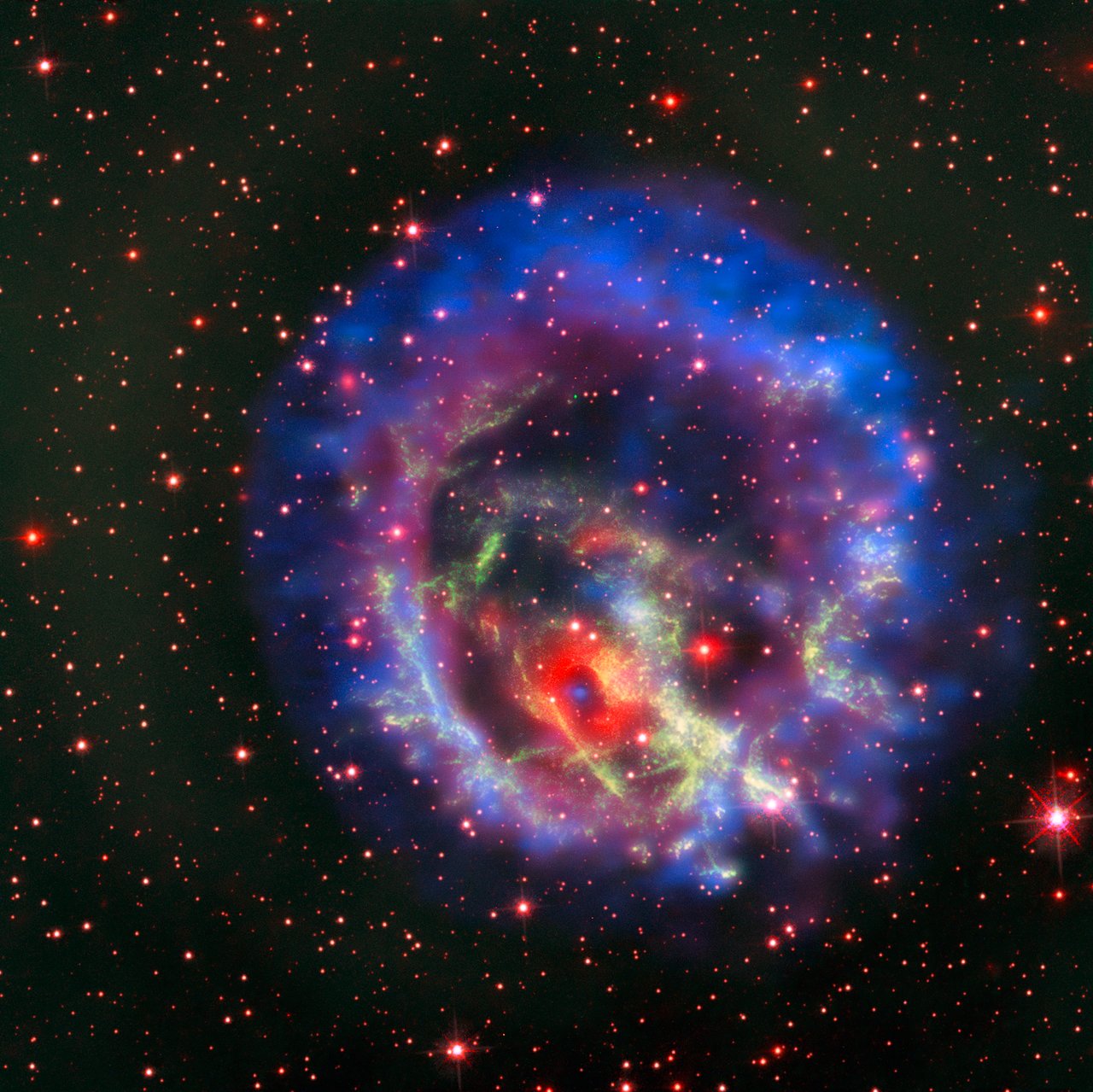This Newfound Stellar Remnant Is the First of Its Kind: Why It's So Special
When astronomers peered into the constellation Tucana (the toucan), they found the small-but-powerful remnant of a stellar explosion hidden amid the colorful clouds of a nearby galaxy. The stellar remnant is the first of its kind found outside the Milky Way.
The strands of gas and dust left behind from a 2,000-year-old supernova shine in vibrant colors in new imagery created by space- and ground-based telescopes, including the European Southern Observatory's (ESO) Very Large Telescope, in Chile. Astronomers searched these clouds, located in a neighboring galaxy 200,000 light-years away, and found a well-hidden neutron star they'd suspected was inside.
The ESO, which operates the Very Large Telescope, released the dazzling images in a photo description on April 5. [In Photos: Amazing Views from the Very Large Telescope]
Frédéric Vogt, an ESO fellow, led a team of researchers to locate the hard-to-find stellar corpse that might explain "p1." Scientists have known about this source of X-ray waves for years but had yet to pinpoint its location.
The team studied the shapes of gas in a nearby dwarf galaxy known as the Small Magellanic Cloud, according to the ESO image description. The Small Magellanic Cloud's name comes from its smudge-like appearance in the southern skies. However, rather than a cloud, it's actually a collection of millions of stars.
A slowly expanding ring of gas inside the clouds of this system was an early clue to where the neutron star might be, researchers said in the image description.
Living stars create fusion and produce energy, and some stars are larger than others. But when death approaches, stars larger than 1.4 times the mass of the sun explode (leaving behind formations like rings) and can also collapse and leave behind an ultradense core known as a neutron star. In these cases, protons and electrons are put under tremendous gravitational pressure and form densely packed neutrons, hence the name.
Breaking space news, the latest updates on rocket launches, skywatching events and more!
Just like living stars, neutron stars can vary in strength. And the one hiding in these vibrant clouds was tricky to confirm because observations indicated it had a low magnetic-field strength. This means the neutron star radiates only at x-ray wavelengths, and not at other detectable wavelengths along the electromagnetic spectrum. And while p1 initially appeared to emanate from the middle of the ring of gas that the team was studying, it was initially unclear if this neutron-star candidate was at the center of the ring or farther behind it. An instrument called MUSE (Multi Unit Spectroscopic Explorer) on the Very Large Telescope helped the team confirm what turned out to be an exciting finding.
The highly precise MUSE instrument spotted a cosmic coincidence: The ring perfectly circled p1. When the team discovered that the neutron star and p1 were one in the same, they compared their findings with the Chandra X-ray Observatory's existing X-ray data on this region f and confirmed their discovery.
"This is the first object of its kind to be confirmed beyond the Milky Way, made possible using MUSE as a guidance tool," Liz Bartlett, an ESO fellow and a co-author of a new study describing the findings, said in the image description. "We think that this could open up new channels of discovery and study for these elusive stellar remains."
The new work was detailed March 2 in the journal Nature Astronomy.
Follow Doris Elin Salazar on Twitter @salazar_elin. Follow us @Spacedotcom, Facebook and Google+. Original article on Space.com.

Doris is a science journalist and Space.com contributor. She received a B.A. in Sociology and Communications at Fordham University in New York City. Her first work was published in collaboration with London Mining Network, where her love of science writing was born. Her passion for astronomy started as a kid when she helped her sister build a model solar system in the Bronx. She got her first shot at astronomy writing as a Space.com editorial intern and continues to write about all things cosmic for the website. Doris has also written about microscopic plant life for Scientific American’s website and about whale calls for their print magazine. She has also written about ancient humans for Inverse, with stories ranging from how to recreate Pompeii’s cuisine to how to map the Polynesian expansion through genomics. She currently shares her home with two rabbits. Follow her on twitter at @salazar_elin.




